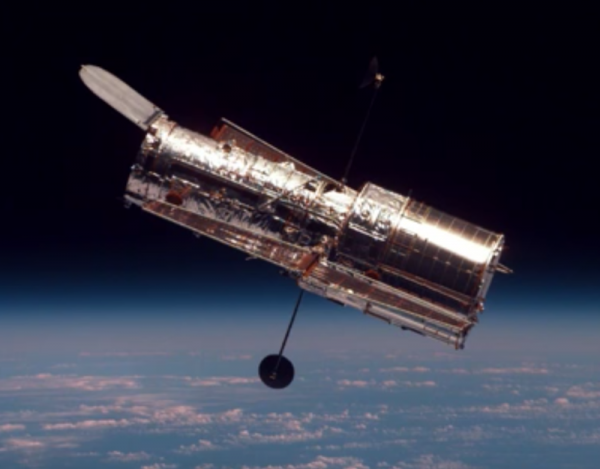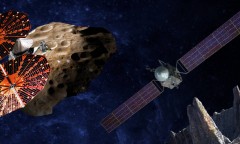By Vishal Goel, | January 08, 2017

The star HD 172555 is part of the Beta Pictoris Moving Group. (YouTube)
NASA's Hubble Space Telescope has discovered exocomets (comets outside the solar system) plunging onto a 23 million years old star named "HD 172555," at around 95 light-years away from Earth.
According to the scientists, the presence of these comets provides circumstantial evidence of "gravitational stirring" by an unseen Jupiter-sized planet that deflects these comets and hurls them into the star.
Like Us on Facebook
The exocomets, not seen around the star, were found after gas was detected, which is likely the vaporized remnants of their icy nuclei.
HD 172555 is one of the extrasolar systems where astronomers have detected wayward comets. All the systems are young, under 40 million years old. Such events also provide new insights into the past and present activity of comets in our solar system. For instance, infalling comets could have transported water to Earth and other inner planets of our solar system.
The star HD 172555 is part of the Beta Pictoris Moving Group, a collection of stars born from the same stellar nursery. It is the second group member found to harbor such comets. The stellar group is the closest collection of young stars to Earth. The grouping is at about the age that it should be building terrestrial planets, said study leader Carol Grady of Eureka Scientific Inc. in Oakland, California.
A team of French astronomers first discovered exocomets transiting HD 172555 in data gathered between the years 2004 and 2011 by the European Southern Observatory's HARPS (High Accuracy Radial velocity Planet Searcher) planet-finding spectrograph. The HARPS spectrograph detected calcium footprints imprinted in the starlight, suggesting that comet-like objects were falling into the star. After that, Grady's team used Hubble's Space Telescope Imaging Spectrograph (STIS) and the Cosmic Origins Spectrograph (COS) in 2015 to conduct a spectrographic analysis in ultraviolet light, which allows Hubble to identify the signature of certain elements.
Hubble detected silicon and carbon gas in the starlight moving at about 360,000 miles per hour across the face of the star. The most likely explanation for this is that Hubble saw material from comet-like objects that broke apart after streaking across the face of the star, said Grady.
-
Use of Coronavirus Pandemic Drones Raises Privacy Concerns: Drones Spread Fear, Local Officials Say

-
Coronavirus Hampers The Delivery Of Lockheed Martin F-35 Stealth Fighters For 2020

-
Instagram Speeds Up Plans to Add Account Memorialization Feature Due to COVID-19 Deaths

-
NASA: Perseverance Plans to Bring 'Mars Rock' to Earth in 2031

-
600 Dead And 3,000 In The Hospital as Iranians Believed Drinking High-Concentrations of Alcohol Can Cure The Coronavirus

-
600 Dead And 3,000 In The Hospital as Iranians Believed Drinking High-Concentrations of Alcohol Can Cure The Coronavirus

-
COVID-19: Doctors, Nurses Use Virtual Reality to Learn New Skills in Treating Coronavirus Patients











